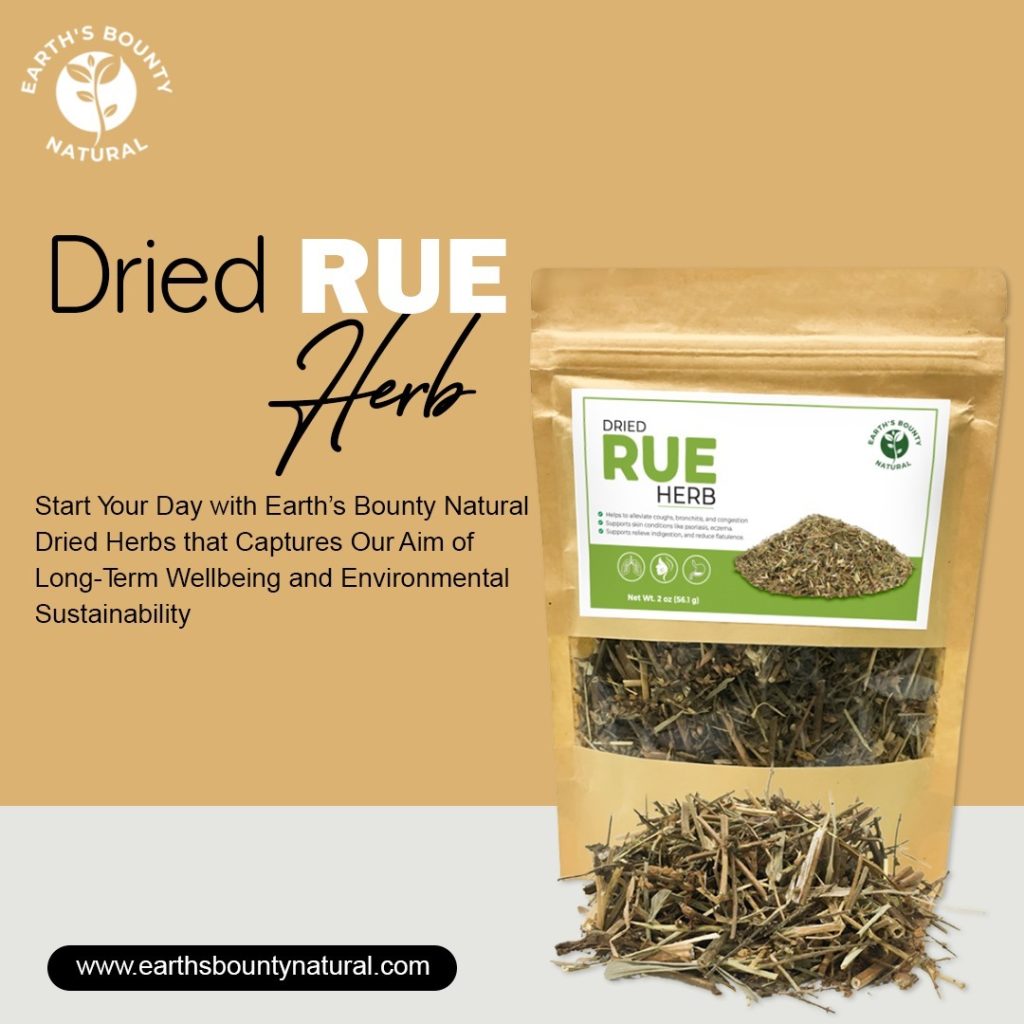History, Uses, and Benefits of the Dried Rue Herb
This extensive article aims to provide a thorough exploration of dried rue, ensuring readers gain a comprehensive understanding of this remarkable herb. For further information or specific inquiries, consulting a professional herbalist or medical practitioner is recommended. Dried rue, with its rich history and diverse applications, remains a valuable addition to both traditional and modern herbal practices.
The Dried Rue Herb, often simply referred to as “Dried Rue,” has a rich history and a variety of uses and benefits that have been recognized for centuries. This article delves into the origins of dried rue, its traditional and modern uses, and the numerous health benefits it offers.
History of Dried Rue
Ancient Origins
The hardy perennial herb known by its scientific name, Ruta graveolens, is indigenous to the Mediterranean region. It has been used since antiquity, when the Greeks and Romans valued it highly for its therapeutic qualities. Rue was seen as a symbol of regret and repentance in Greek mythology. Thanks to its strong, bitter flavor and alleged power to ward off evil spirits and contagions, the Romans utilized it as a culinary herb and medical plant.
Medieval Europe
Dried rue Herb became popular throughout Europe during the Middle Ages. It was frequently cultivated in monastic gardens and added to a variety of therapeutic mixtures. Rue was prized by monks and herbalists for its therapeutic properties, which included treating mental disorders and digestive problems. The herb was also employed as a protective charm against poison and witches, and it was thought to improve vision.
Renaissance to Modern Times
During the Renaissance, dried rue remained a huge favorite. It was often mentioned in both herbal texts and pharmacopoeias. Rue was utilized in the kitchen and medicine cabinet throughout Europe as news of its virtues spread. It eventually became a standard in homes. Across the globe, traditional medicine and herbal medicines continue to highly value rue.
Renaissance to Modern Times
Herbal medicine experienced a revival throughout the Renaissance, and rue was no different. In their publications, herbalists and doctors of the era, such Nicholas Culpeper, praised the benefits of rue. It was used for symbolic and ritualistic purposes in addition to medicinal and food.
Dried rue is still used today in many traditional medical procedures and cultural customs. Herbalists, scholars, and others interested in natural health continue to be drawn to it because of its historical relevance and wide range of applications.
Uses of Dried Rue Herb
Medicinal Uses
Digestive Health
Dried rue has a reputation for promoting appetite and facilitating digestion. It is frequently used to treat digestive issues like gas, bloating, and cramping in the stomach. The bitter components in the herb encourage the formation of digestive enzymes, which aids in the faster breakdown of meals.
Menstrual Health
Dried rue has long been used to ease cramping during periods and control menstrual cycles. Because of its antispasmodic qualities, it helps to ease menstrual pain and discomfort by relaxing the uterine smooth muscles.
Respiratory Health
Because of its expectorant qualities, rue is helpful in the treatment of respiratory ailments like asthma and bronchitis. By removing mucus from the respiratory system, it facilitates breathing and lessens congestion.
Culinary Uses
Although some people find the pungent, bitter flavor of dried rue to be off-putting, it is employed sparingly in many culinary traditions. It can give food a distinctive depth of flavor when used in tiny doses. Rue is frequently added to sauces, salads, and meat dishes in Mediterranean cooking, especially in Italy and Greece.
Protective and Ritual Uses
Dried rue was once thought to have defensive qualities. It was incorporated into a number of charms and ceremonies to fend off evil spirits and provide protection from witches. Rue sprigs were worn as amulets for protection or hung above entrances in various cultures.
Gardening and Pest Control
Additionally well-known for its ability to repel insects is dried rue. It’s a useful companion plant since it may be utilized to keep pests out of the garden. Rue repels insects like flies and mosquitoes with its potent aroma.

Benefits of Dried Rue
Anti-inflammatory Properties
Flavonoids and alkaloids found in dried rue have anti-inflammatory properties. Rue is advantageous for ailments like arthritis and other inflammatory diseases because of these components’ ability to lower inflammation in the body.
Antioxidant Benefits
The herb’s abundance of antioxidants helps shield the body from the damaging effects of free radicals and oxidative stress. These antioxidants support good health in general and may aid in the prevention of long-term conditions including cancer and heart disease.
Antimicrobial Effects
Rue has been shown to have antimicrobial properties, making it effective against certain bacteria and fungi. This makes it useful in treating infections and promoting overall immune health.
Stress and Anxiety Relief
Dried rue has a relaxing effect that can help reduce tension and anxiety. The herb is a helpful natural treatment for neurological problems and sleeplessness because of its capacity to calm the nervous system.
Skin Health
There are several skin disorders that can be treated topically with dried rue. Because of its anti-inflammatory and antibacterial qualities, it works well for treating rashes, bug bites, and skin irritations. In certain conventional cosmetic treatments, rue is also used to enhance the complexion and general health of the skin.
Pain Relief
Dried rue has antispasmodic and analgesic qualities that help relieve discomfort. In addition to various forms of pain and discomfort, it can be used to treat headaches and muscle soreness.
How to Use Dried Rue Herb
Herbal Teas and Infusions
One of the most common ways to use dried rue is to make herbal tea. To prepare rue tea, steep a small amount of dried rue leaves in hot water for 5-10 minutes. This tea can be consumed to aid digestion, relieve menstrual cramps, or promote relaxation.
Topical Applications
For skin conditions and pain relief, dried rue can be made into a poultice or infused in oil and applied topically. To make a poultice, crush dried rue leaves and mix with a small amount of water to form a paste. Apply this paste to the affected area and cover with a clean cloth.
Culinary Applications
When using dried rue in cooking, it’s important to use it sparingly due to its strong flavor. Add a pinch of dried rue herb to sauces, soups, and stews to enhance the flavor. Rue can also be used to infuse oils and vinegars, adding a unique taste to dressings and marinades.
Safety Precautions
While dried rue herb has many benefits, it’s important to use it with caution. Rue can be toxic in large amounts and should not be used by pregnant women as it can induce uterine contractions. Always consult with a healthcare provider before using rue, especially if you are on medication or have existing health conditions.
Buy Organic Rue Herb at Earth’s Bounty Natural
Discover the unparalleled quality and purity of herbs with Earth’s Bounty Natural. Our commitment to sustainability and wellness ensures that every product we offer is crafted with care and precision. When you choose Earth’s Bounty Natural, you’re not just purchasing dried rue; you’re investing in your health and the environment. Our herbs are sourced from organic, eco-friendly farms, ensuring that you receive the most potent and natural products available.



